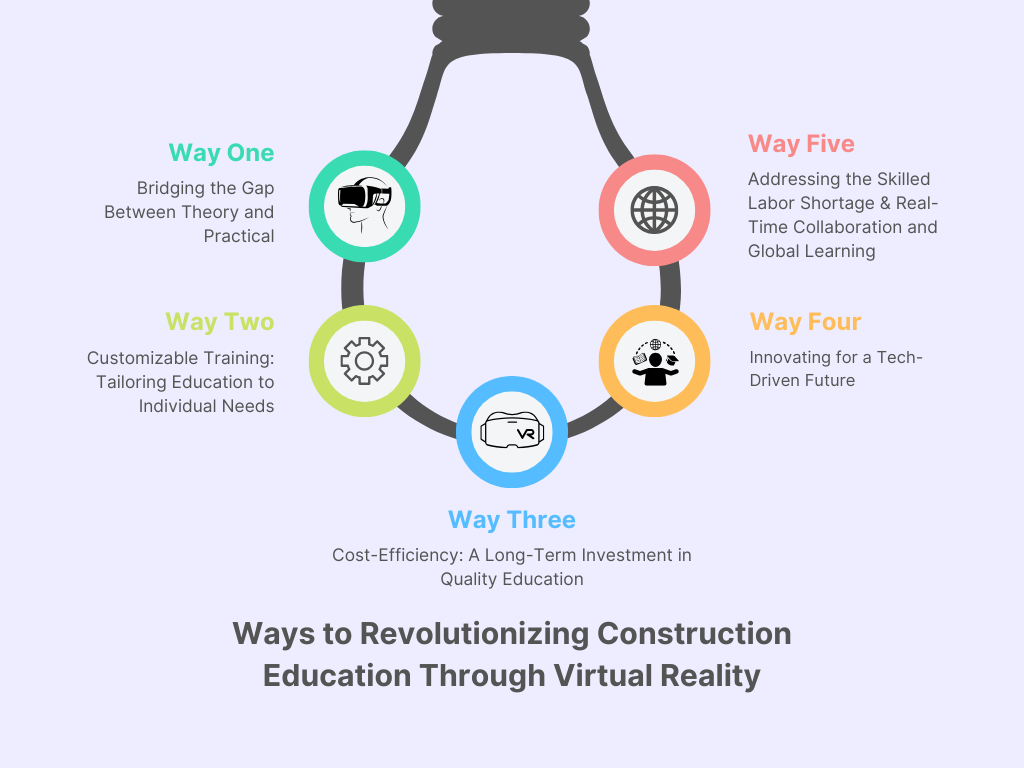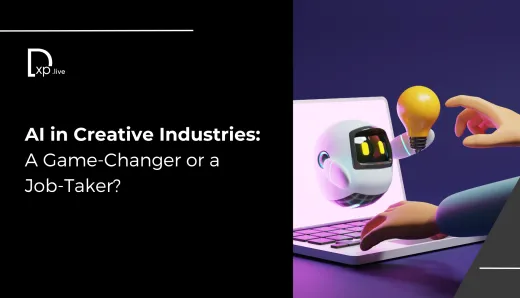Revolutionizing Construction Education Through Virtual Reality

In the construction industry, change is unavoidable. Regarding the techniques, supplies, and technology employed in the building industry, this is an industry reality. However industrial education has stagnated, based on traditional methods that do not give students the skills they need for contemporary construction methods. Here is where Virtual Reality (VR) comes in. The cutting-edge tool has the capacity to revolutionize not only how work is being done, but how it is being taught, especially in the construction domain. Thankfully, we are only in the initial stage of its implementation, and the prospects are promising. We should be encouraging this technology in the classrooms, as well as on the field. In this article, we will analyze how construction education systems are advancing with the use of virtual reality and how important it is for the change to take place.
A Safer and More Effective Approach to Immersive Learning
One of the most significant advantages of VR in construction education is its ability to simulate real-world scenarios without any of the inherent risks. Students can practice operating heavy machinery, navigating complex construction sites, or performing dangerous tasks, all within a virtual environment. This immersive experience allows learners to make mistakes, understand consequences, and improve their skills, all without the possibility of injury or costly errors. The result? A generation of more confident and capable professionals prepared to handle the pressures of real-world construction projects.

Bridging the Gap Between Theory and Practical
The conventional approaches to teaching construction go through the classroom and into the job site, only to suffer from ineffectiveness. To read how to construct a wall or to read about how scaffolding has to be joined is one step, to actually join scaffolding, is quite another step. Virtual reality aims to solve problems such as these, where students acquire the theoretical substance and are able to put it into practice in real time. With VR, students can instantly practice different materials and techniques for building structures, and tools that further reinforce what they have learned. This kind of education allows speedier development of skills and stabling of knowledge, and better professionals emerging from school.
Customizable Training: Tailoring Education to Individual Needs
Every student learns at a different pace and may have unique educational needs. VR technology allows educators to customize training programs to suit individual learners. For example, if a student struggles with a particular concept, they can spend extra time in the virtual environment honing that specific skill without holding back the rest of the class. This flexibility also extends to professionals already working in the field who want to upskill. With VR, they can refresh their knowledge or learn new techniques without having to step away from their current projects.
Cost-Efficiency: A Long-Term Investment in Quality Education
Implementing VR in construction education might seem like an expensive investment at first glance, but the long-term benefits far outweigh the costs. Traditional training methods often require physical materials, travel to construction sites, or expensive machinery that can be damaged during practice. In contrast, VR requires only a headset and a computer, dramatically reducing the costs associated with hands-on training. Additionally, VR training modules can be reused multiple times, allowing institutions to scale their educational offerings without the ongoing expenses associated with traditional teaching tools.
Innovating for a Tech-Driven Future
VR is the key technology that will make the construction industry embrace the modern software age. VR has the power to change the traditional sector, where the industry is backward in applying new technologies. Integrating VR in education helps students to not just fit into current requirements but lead forthcoming patterns. They are future leaders, and VR is paving their way flattering them with the skills, the discipline, and the ability to think out of the box. Imagine looking at a project even before one starts construction, and having the capacity to alter some parts of the structure in order to improve it even while building, all these capabilities lie in the virtual world which is still rapidly evolving and growing.
Addressing the Skilled Labor Shortage
One of the most pressing issues in the construction industry is the shortage of skilled labor. Virtual reality offers a solution by attracting a new generation of workers who are more technologically savvy. The gamified aspects of VR can make construction education more appealing to younger students who might not have considered the field before. Furthermore, the ability to train quickly and efficiently through VR allows companies to upskill their workforce in a fraction of the time it would take using traditional methods. This can help bridge the gap between demand and supply in the labor market, ensuring that the industry remains robust and competitive.
Real-Time Collaboration and Global Learning
Another overlooked advantage of the technology that VR presents students and professionals in the construction is the factor of collaborating with colleagues around the world. The competition and the project win are all about working together efficiently and completing different assignments in diverse areas for the same cause. This brings new ways in which the learning process can be enhanced as best-learned practices from all sections of the world can easily be adopted and applied. Everybody wins. Construction organizations can benefit from international expertise while students can gain insight into global projects without leaving their study places.
Final Thoughts : The integration of virtual reality into construction education is more than just a trend; it’s the future. As VR continues to evolve, so too will its applications in the construction industry, offering a safer, more cost-effective, and innovative way to train the next generation of professionals. The ability to simulate real-world scenarios, customize training, and foster global collaboration is setting the stage for a more tech-savvy, skilled, and prepared workforce. Embracing VR in education is not just a leap forward—it’s a necessity for the future of construction.
Transform Your Business Today! Visit digitalexperience.live for the latest insights and trends in AI and technology. Stay ahead of the competition and harness innovation to drive your success. Don’t wait - unlock new opportunities and elevate your business by exploring the latest news now!
FAQs
1. How expensive is implementing VR in construction education?
While the initial costs for VR equipment and software development may seem high, the long-term benefits of reusability, reduced material costs, and scalable education make it a cost-effective solution.
2. Can VR completely replace traditional construction training?
No, VR is a supplement, not a replacement. While it offers immersive, hands-on training, traditional methods still play a vital role in understanding real-world dynamics that may not be fully replicated in virtual environments.
3. How does VR improve safety in construction training?
VR allows students to simulate dangerous tasks in a risk-free environment, ensuring they can practice safety protocols without the potential for real-world accidents or injuries.
4. Is VR training suitable for all types of construction roles?
Yes, VR can be easily adapted for various roles within the construction industry, from equipment operators to project managers, which allows learners to gain relevant experience in a safe and controlled environment.
5. Can professionals already in the construction field benefit from VR training?
Absolutely. VR offers a convenient way for seasoned professionals to upskill, practice new techniques, or familiarize themselves with emerging technologies without leaving the job site.



